Posts Tagged ‘Propaganda’


On View November 27, 2013 Through February 16, 2014
“We Can Do It,” “Loose Lips Sink Ships,” and “I Want You” (accompanied by a pointing Uncle Sam) are sayings that have become ingrained on the American consciousness. These and others were part of propaganda campaigns used during WWII to unite the American people towards a common cause.
The National WWII Museum is currently exhibiting some of the most famous propaganda posters from the era along with more obscure works, Home Front Artifacts, newsreels and more as part of the special exhibit We Can. . .We Will. . .We Must! Allied Propaganda of WWII. The exhibit not only highlights the physical works of propaganda during wartime, it also explores how these slogans and images were created and how specific tools and devices were utilized to elicit a response.
Find out more about this and other exhibits at The National WWII Museum.
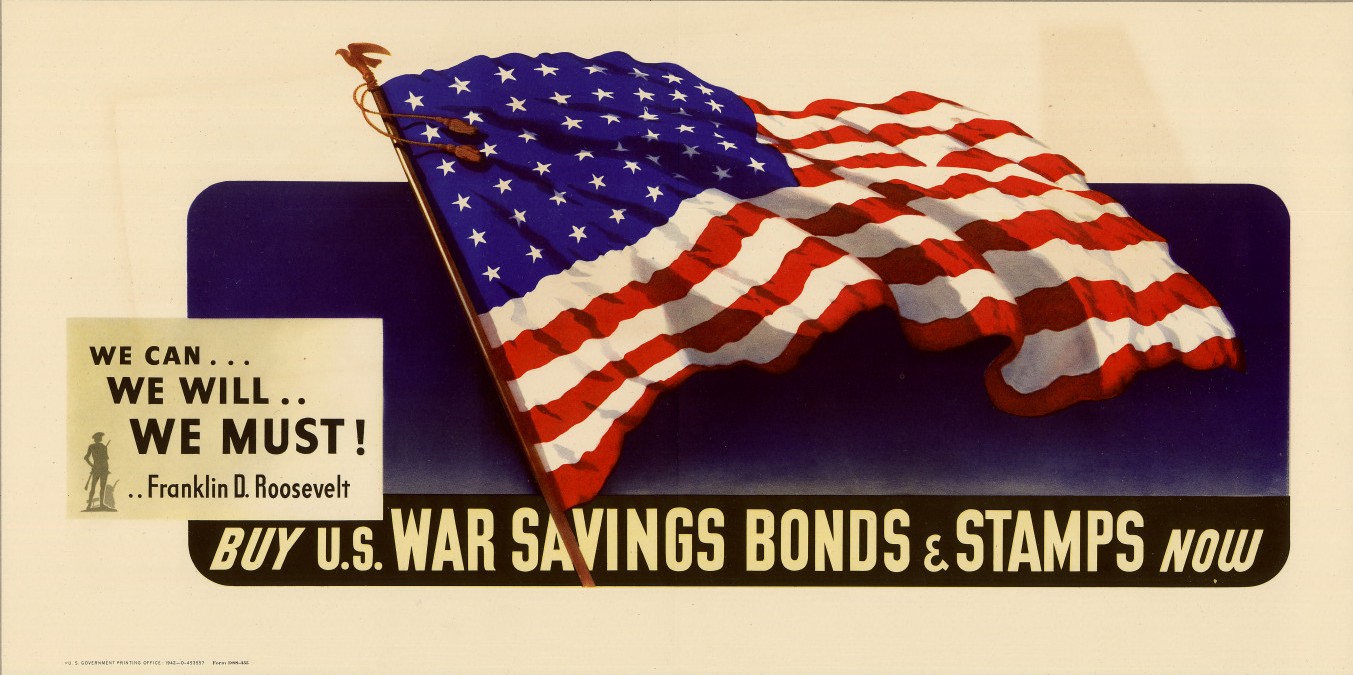



Operation Torch, the invasion of North Africa, represented a series of firsts for the Allied crusade against Nazi Germany and her Allies. It was the first amphibious landing undertaken by the US Army in the European theater. It was the first combat operation commanded by Dwight Eisenhower. And it was the first, and quite possibly the only, operation of the war in which the Allied commanders expected their opponents holding the beach to offer no resistance at all.
The landing beaches in Morocco and Algeria were held by Vichy French forces. These troops were loyal to Germany mostly due to a tenuous agreement whereby the Nazis agreed to keep part of France free from German occupation provided the Vichy resisted an Allied invasion. The Allied leadership believed that when the Vichy French saw the Allied armadas approaching the landing beaches, they would immediately join forces with the invaders to liberate North Africa.
Allied commanders also had to contend with the native North African population. Their willingness to aid the Allied cause was questionable at best. The primary hope of the Allied command was that both the French and the native population would willingly and energetically aid the liberators. Barring that, they would have settled for simply allowing the American and British troops to move through Morocco and Algeria quickly so that they could smash Rommel’s Afrika Korps on the anvil of General Bernard Montgomery’s forces advancing westward from Egypt.
In an attempt to sway both the Vichy French and the North African natives to the Allied cause, thousands of leaflets were dropped over North Africa prior to the landings in November 1942. This leaflet was picked up in Oran, Algeria, by Oscar Rich, who landed there as a member of the 1st Quartermaster Battalion, 1st Infantry Division. The leaflet, printed in French on one side and Arabic on the other, reads in part:
Message from the President of the United States:
We come to you to liberate you from your conquerors, whose only desire is to deprive you of your sovereign right to worship freely and your right to live your way of life in peace.
We come to you solely to defeat your enemies – we wish you no harm. We come to you with the assurance that we will leave as soon as the menace of Germany and Italy is dissipated. Help us and the day of universal peace will arrive.
Unfortunately for the Allies, the Vichy French offered stiff resistance to the landings in some sectors, and the day of universal peace was delayed indefinitely.
-
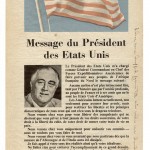
- French side of US propaganda leaflet dropped over Oran.
-
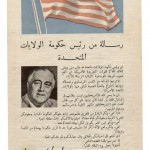
- Arabic side of leaflet collected by Oscar Rich.
-
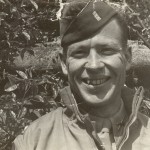
- Oscar Rich served with the 1st Infantry Division throughout the war.
This post by Curator, Eric Rivet.



Today marks the 70th anniversary of the creation of the Office of War Information (OWI). Its purpose was to centralize the many information services of the United States government and create a single line of communication about the war to the American public. The OWI created and distributed posters, booklets, photographs, radio shows and films designed to improve morale and boost patriotism, encourage people to participate in the war effort and, most importantly, control all information Americans received about the war.
The Office of War Information created a propaganda machine that controlled all war-related information given to the public. Images and news reports were censored. Propaganda was created. Government approved ideas were included in films, radio and advertising. Anything that negatively impacted the war effort or damaged morale was removed from public consumption.
Photographers were sent across the country to document Americans doing patriotic work. They photographed workers at factories and on farms, children gathering scrap for the war effort, men and women in uniform, and social change in the form of positive images of women and African Americans – everyone “doing their bit” for the war effort.
Propaganda posters were everywhere. They encouraged Americans to join up, plant a Victory Garden, stay quiet, work in factories and on farms, watch out for the enemy (everywhere) and, most of all, support the war effort. A spokesperson for the OWI said, “People should wake up to find a visual message everywhere like news snow – every man, woman and child should be reached and moved by the message.”
Images distributed by the Office of War Information. Click to enlarge.
-
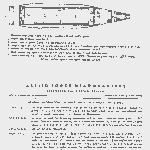
- Instructions for loading propaganda shell with leaflets
-
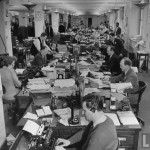
- Office of War Information
-
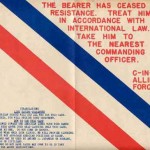
- Safe conduct pass created by OWI/PWD (Psychological Warfare Division)
-
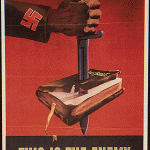
- Propaganda Poster of Nazis Stabbing the Bible
-
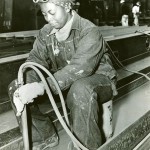
- African American worker at the Richmond Shipyards
-
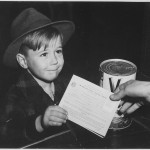
- Young boy uses ration book for first time.
Radio programs, newsreels and films were an essential part of this propaganda machine. Elmer Davis, the OWI Director in 1942, said of this process, “The easiest way to inject a propaganda idea into most people’s minds is to let it go through the medium of an entertainment picture when they do not realize that they are being propagandized.”
This war of information was not limited to US shores; enemy troops in Europe and the Pacific were also targeted. Leaflets, newspapers in foreign languages and magazines were used to demoralize enemy soldiers and encourage them to surrender. The Psychological Warfare Division (which worked with OWI and the Office of Strategic Services) also distributed soap, matches, sewing kits and seed packs with anti-Axis messages and pro-American images.
Many in Congress did not like the operation of the Office of War Information on US soil and by 1944 most of its work was done overseas. It was shut down in September of 1945. Many Americans were never aware that their war was fought not just on the battlefield but at the movies, in their favorite magazines and on the factory floor.
Want to learn more? View six new Take a Closer Look galleries featuring propaganda posters.
Posted by Laura Sparaco, K-12 Curriculum Coordinator at The National WWII Museum.



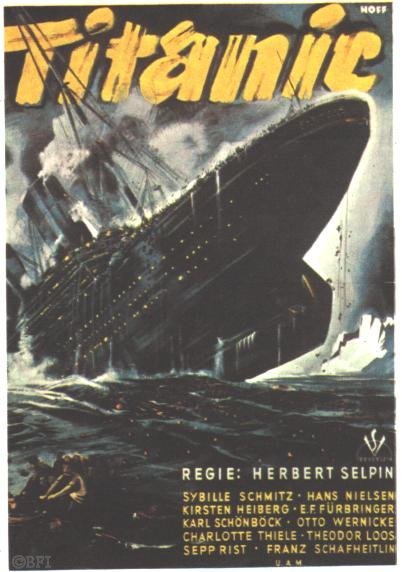
On April 15, 1912, the luxury liner RMS Titanic met a tragic end on her maiden voyage after striking an iceberg in the North Atlantic Ocean. It is estimated that more than 1,500 passengers and crewmembers lost their lives in an event that has captivated the public for a century.
Since then, the story of the Titanic has worked its way into popular culture with a number of fictionalized accounts, the most famous being the 1997 James Cameron blockbuster starring Leonardo DiCaprio and Kate Winslet. But an earlier WWII-era German film, released in 1943, actually used the story of the ill-fated vessel as a means of propaganda to malign British and American ideals as being overly-materialistic, greedy and capitalistic.
Made by Tobis Productions for the Universum Film AG (UFA) studio in Berlin, Titanic was released in December 1943. The film would later be banned by Propaganda Minister Joseph Goebbels for a number of reasons, including the fact that late in the war, the last thing he wanted to expose citizens to were scenes of mass panic and death. Additionally, a scene where steerage passengers remained locked behind gates with no hope of escape was deemed too similar to real-life scenes being played out in concentration camps.
The plot puts the blame for the tragedy squarely on selfish White Star stockholders, who throw caution and concern for passengers and crew to the wind in the promise of a financial windfall. Additionally, the film’s protagonist, a fictional German First Officer named Herr Petersen, tries to prevent the careless behavior that leads to the sinking and later selflessly attempts to rescue those on the ship. German passengers in steerage go to their death with a quiet dignity and courage, while British and Americans resort to any means to save themselves while in a state of full-on panic.
The film ends with this epilogue to the tragedy. “The deaths of 1,500 people remains un-atoned, forever a testament of Britain’s endless quest for profit.”
The film was the most expensive German production up until that time and was fraught with disasters of its own. Including the arrest of the original director, who had been overheard criticizing the film’s marine consultants (German officers) for being overly preoccupied with the female actresses. He was reported to the Gestapo and soon after his arrest, in what was dubiously ruled a suicide, was found hanged in his cell. Additional delays occurred when the original version of the film was destroyed in a bombing raid. The stand-in for this fictional Titanic was the SS Cap Arcona (which was sunk on May 3, 1945, by the RAF with an estimated death toll of 5,000).
The film would fade in and out of obscurity for several years, often reemerging with the more-propagandized elements censored out. The complete and uncensored version was released on DVD in 2005.















